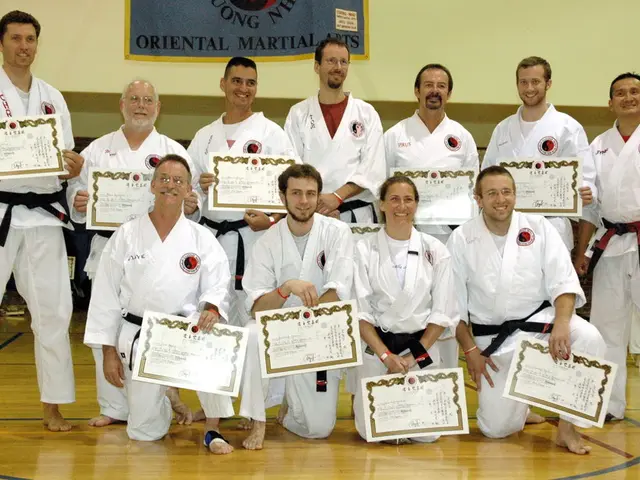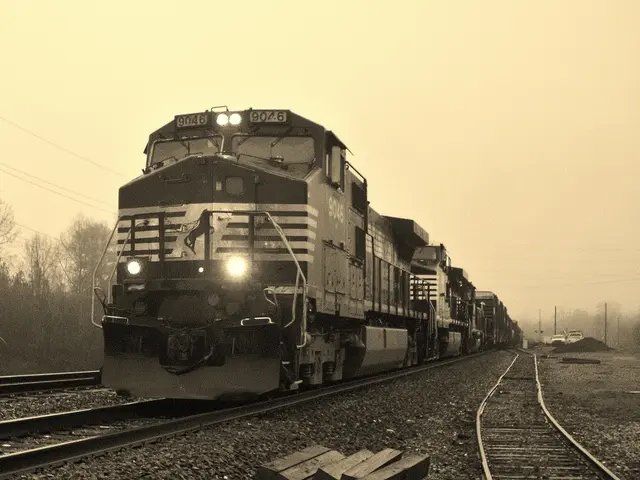Aircraft Pitch Control Function of the Elevator: Exhaustive Examination
Hear ye, hear ye! Buckle up as we dive into the nitty-gritty of airplane elevators - those bad boys responsible for controlling the pitch on any flying machine. This ain't your average "why elephants have long noses" kinda story, nope. This is graduate-level stuff right here, so sit tight and grab a coffee 'cause we're about to school you like a boss. Let's roll!
Elevator 101
In the aviation world, an elevator is a control surface that determines the up and down movement of an airplane's nose. You'll find these bad boys on the back end of the aircraft, standing proud on the tail, nicknamed the horizontal stabilizer. They keep the plane stable in pitch and help the pilot control the plane's altitude like a boss.
So, how do they work? Simple. The elevator operates via mechanical systems or fly-by-wire systems connected to the pilot's control yoke or stick. When the pilot pulls back, the elevator goes up, which forces the tail down and makes the nose pitch up. Conversely, pushing forward brings the elevator down, lifting the tail and pitching the nose down. Neat, huh?
Under the Hood
Let's take a peek under the hood and see what makes these elevators tick. They typically have two main parts: the location and design, and the mechanism of operation.
Design Time
Elevators are usually mounted on the horizontal stabilizer, which stabilizes the plane in pitch, while the elevator introduces control dynamics by altering the aerodynamic forces acting on the stabilizer. Some aircraft use stabilators, where the entire horizontal surface acts as the elevator, for extra maneuverability.
Operation 101
Elevators operate through simple physics and aerodynamics. By altering the lift force on the tailplane, they modify the pitching moment and offer the pilot precise control over the plane's orientation.
Aerodynamic Principles
Pitch control, angle of attack, and lift are the main factors at play here. Elevators manipulate the pitching moment, the force causing the plane to tilt, by influencing the center of gravity, the aerodynamic center, and the lift force.
Pitch and Stability
The pitching moment affects the plane's orientation and can be adjusted through elevator deflection. Moving the elevator changes the horizontal stabilizer's lift force and pitch angle, allowing tight control of the plane's altitude.
Angle of Attack and Lift
The angle of attack is crucial for generating lift. By changing the angle of attack with elevator deflection, the plane generates different lift forces, which in turn influence the climb, descent, and level flight. However, exceeding the critical angle of attack can lead to aerodynamic stall, so let's be mindful there, eh?
Technological Variations
Modern aircraft are all about innovation, so it's no surprise that elevators have evolved too. Here are two main types:
Stabilators and Canards
You might find stabilators, where the entire horizontal surface moves, in fighter jets like the F-16. Similarly, canard-configured aircraft use forward-mounted horizontal surfaces to influence pitch.
Trim Systems
Trim systems help make flying easier on the pilot by adjusting the elevator's neutral position. Modern fly-by-wire systems employ electronic adjustments, while traditional aircraft use trim tabs mounted on the elevator.
Maintain and Conquer
Aircraft maintenance is essential to ensure optimal flight control and prevent in-flight incidents. Routine inspections focus on checking structural integrity, corrosion, hinge movement, actuator performance, and secure attachment to the horizontal stabilizer. Maintenance teams keep the elevators in top shape by lubricating moving parts, testing actuator responses, and inspecting for wear or fatigue.
Practical Implications
Pilot Training
Understanding the elevator's behavior is crucial for pilots, especially during takeoff, landing, and stall recovery procedures.
Flight Dynamics and Safety
Elevator system malfunctions can have catastrophic consequences, so modern aircraft incorporate redundant systems and autopilot safeguards to minimize the risks.
The Future of Elevators
Innovations in materials science and control systems are leading to more responsive and durable elevators. Autonomous vehicles and drones increasingly rely on these advanced control algorithms for precision control, mimicking the elevator's functionality without human intervention.
Wrapping Up
The elevator is a critical part of an aircraft's control system, with a significant impact on pitch regulation and overall flight dynamics. As technology advancements continue, mastering the elevator's function remains essential for ensuring safety, efficiency, and performance in modern aircraft. So there you have it - elevators in all their glory! Now go forth and fly fearlessly, knowing you've got the inside scoop on these incredible contraptions.
Bonus Fact: Parts of an Airplane
Curious about the other components of an airplane? Check out our article on the various parts, such as the fuselage, engine, and cockpit, to get a full picture of this marvel of engineering.
Relevant Readings and References
https://www.faa.gov/regulations_policies/orders_notices/index.cfm/go/document.information/documentid/9886https://skybrary.aero/articles/elevatorhttps://www.faa.gov/sites/faa.gov/files/regulations_policies/handbooks_manuals/aviation/airplane_handbook/19_afh_ch18.pdfhttps://www.boldmethod.com/learn-to-fly/systems/here-is-what-you-can-do-if-you-lose-elevator-control-in-flighthttps://limblecmms.com/blog/aircraft-preventive-maintenance-checklist/
- The aviation industry relies heavily on technological advancements to ensure the efficient operation of aircraft elevators, a key component in determining the up and down movement of an airplane's nose.
- Finance plays a crucial role in the upkeep of these complex systems, as maintenance and regular inspections are essential to maintain the structural integrity and prevent in-flight accidents caused by malfunctions.
- In the expansive realm of transportation, the aerospace sector encompasses not only aircraft but also drones and other autonomous vehicles that leverage the precise control algorithms, originally developed for aircraft elevators, for optimal performance.







